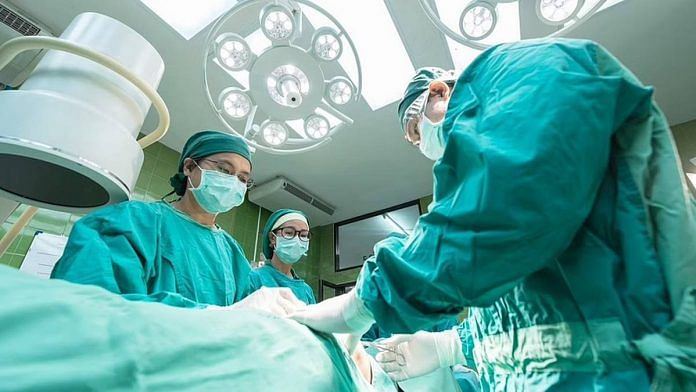Bengaluru: Researchers at Yale University have used a custom device to revive some dead cells and tissues in pigs who had been dead for up to an hour. The pigs did not gain consciousness and they were anaesthetised to discourage brain activity, but their hearts began to beat and cells in multiple organs started to function again.
The restoration of organ function in the early stages of death is a promising outcome for addressing the low supply of human organs for transplant, often compounded by how quickly organs deteriorate after death even in registered donors.
The procedure was performed with a solution called OrganEx that contained blood, drugs inhibiting cell death, nerve blockers (to prevent brain activity), and nutrients, and was pumped into the pigs’ bodies.
The solution prevented rigor mortis — or the stiffening of limbs and cells when depleted of oxygen — as observed in the bodies of all dead mammals. This solution was pumped into the bodies of the pigs with a custom device.
By contrast, other pigs in the trial that were treated with a standard extracorporeal membrane oxygenation or ECMO machine, which pumped blood through their bodies, became stiff and had collapsed blood vessels.
The findings were published in the journal Nature Wednesday.
Also read: Creepy breakthrough? US scientists reanimate dead spiders to use them as claw-like ‘grippers’
Revival from death
Death occurs biologically when oxygen is not accessible to human (or mammalian) cells. However, restoring oxygen to these dead cells also leads to damage by stressing cells and tissues. This is called reoxygenation injury, which results in a chemical imbalance in cells and leads to inflammation.
But some viable cells from organs, researchers have said, can be extracted from those who are deceased, and cultured in the lab, indicating that some cells and tissues escape ischaemic (loss of oxygen) damage.
Some of the same scientists who have now revived the cells and tissues in dead pigs were able to demonstrate this three years ago, when they developed an infusion called BrainEx, which could reportedly successfully restore cellular functions in the brain four hours after death.
In the fresh study, the researchers attempted to expand the restorative solution experimentally to the entire porcine body that was preserved at body temperature (warm ischaemia).
The process of circulating artificial or infused blood into blood vessels and tissues deprived of oxygen is called reperfusion. The procedure can be attempted only within 20 minutes of a mammal’s heart stopping.
The reperfusion of warm ischaemic pigs used in this experiment was performed for six hours — started an hour after death — and resulted in unprecedented success, the researchers said.
The pigs’ hearts started to pump and circulation was restored to the body. Many cellular functions in organs like the kidney, liver, and even brain, were restored. Anaesthesia was given to the pigs before they were killed by stopping their hearts, and nerve blockers kept the pigs from waking up, feeling conscious, or feeling pain — essentially keeping them brain dead and unsuffering while their body functioned partially.
Whole body perfusion of OrganEx also produced an enhanced blood flow through smaller blood vessels, than regular ECMO.
The authors added an observed oddity in their paper — when a specific contrast (dye) was injected into the arteries of the dead pigs for flouroscopic imaging (tracking through the body), the animals twitched and jerked their heads, necks, and torsos. The same was not observed in ECMO-treated animals, and the reason for this peculiar reaction across multiple joints and muscles could not be determined.
The researchers were not able to understand where the signal for the movements originated in the cerebrospinal system of the pig, but it showed that the animals were still capable of motor function or movement.
Implications of the experiment
The authors of the study were able to determine death as a multi-step process instead of an immediate process within a narrowly defined timeframe. They also developed a comprehensive single-cell genomic analysis of the multiple organs in a pig and how cellular repair processes take place, creating a unique resource for future studies into death and reperfusion.
“This application of the OrganEx technology demonstrates that cellular demise can be halted, and their state can be shifted towards recovery at molecular and cellular levels, even after prolonged warm ischaemia,” write the authors in their paper.
Scientists unaffiliated with the study have also hailed it as a revolutionary step in medical science, calling it “mind-blowing”. Among other things, the work questions the definition of death as being absolute and completely irreversible, even in small parts.
This experiment with OrganEx, which Yale University is trying to get patented, is far from being ready to apply to humans. Such a procedure is still in its early stages, and the effects and duration of the restoration are as yet unknown. Also unknown is the impact on the brain of the mammal and how well brain function can be restored after a full body reperfusion.
(Edited by Poulomi Banerjee)
Also read: Dedicated teams, cost, facilities — why pvt hospitals do over 75% of organ transplants in India



